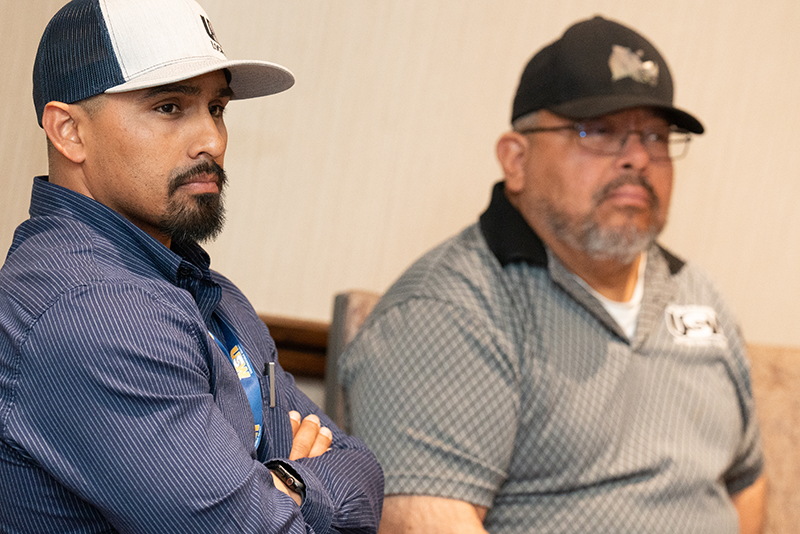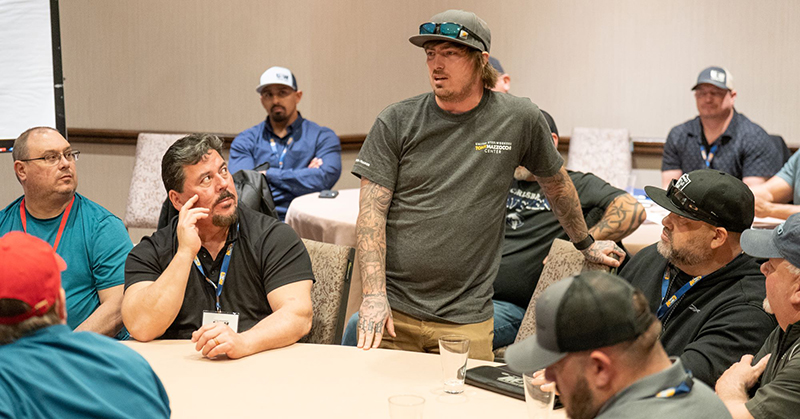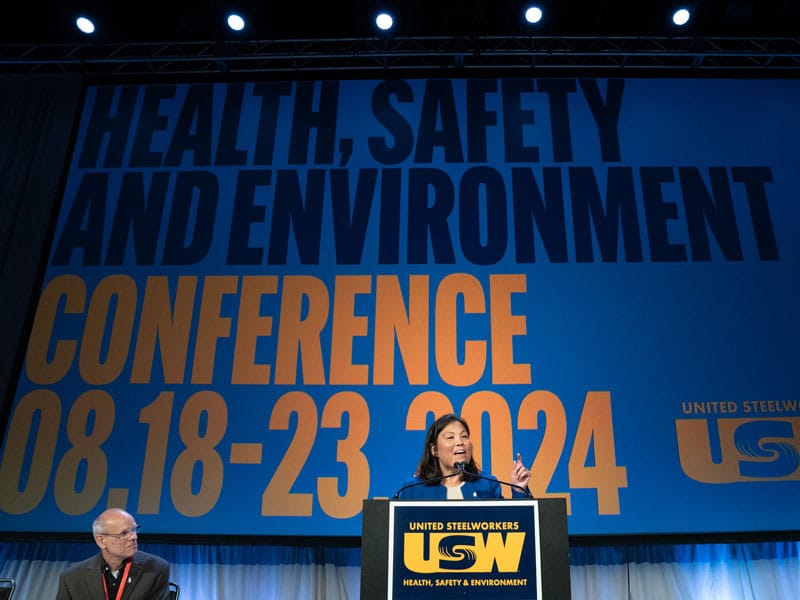USW Atomic Workers Refresh Health and Safety Skills
Approximately 25 members from the USW’s atomic sector spent five days this month sharing information and learning new skills at the union’s Health, Safety and Environment conference.
The conference, held in Pittsburgh April 17-21, drew a record number of attendees, with more than 2,200 representatives from the union and management traveling from across the United States and Canada coming to learn how they can improve health and safety in their workplaces.
Dozens of classes and workshops ranged from using personal protective equipment (PPE) to preventing radiation exposure in the workplace.
Representatives from the Atomic Energy Workers Council (AEWC) and Department of Energy (DOE) sites met in a special session on the third night of the conference, where they brainstormed ways to improve health and safety at the nuclear energy sites in Kentucky, New Mexico, Washington state, Idaho, Ohio, Pennsylvania and Tennessee.

USW Local 12-9477 brought five members to the conference from the Waste Isolation Pilot Plant (WIPP) in New Mexico. Workers there store nuclear waste in salt mines 2,150 feet below the ground and face many occupational hazards, including exposure to radiation from waste handling.
Local 12-9477 President Jonathan Fuentes said the Stop Work Authority class stood out as having particularly relevant information for the people in his local.
“Where I work, it’s almost frowned upon to stop work when you feel it’s unsafe, because the way the company perceives it, you’re just trying to get out of work,” said Fuentes. “It’s scary because people could actually get hurt.”

Jace Radford, who has been a Radiological Control Technician for six years at the Idaho National Laboratory (INL), said the most valuable session for him was about the effects of extended shift work on the human body.
“I work nights, so this was helpful because it was talking about how night shifts and other irregular schedules can disrupt the body’s circadian rhythm and cause some actual disorders in people,” said Radford, a member of USW Local 12-652.
Radford became a worker-trainer for the USWTMC last year and helped to teach a course on understanding the basics of respiratory protection at the conference.
“I’m really familiar with respiratory protection because it’s a big part of my job as a radiological control technician,” said Radford. “It was my first time teaching, and I think it went well.”

By clicking Sign Up you're confirming that you agree with our Terms and Conditions.
Recent News Articles
Want to Learn More?
See how the USW is making a real difference in our communities and our workplaces.

